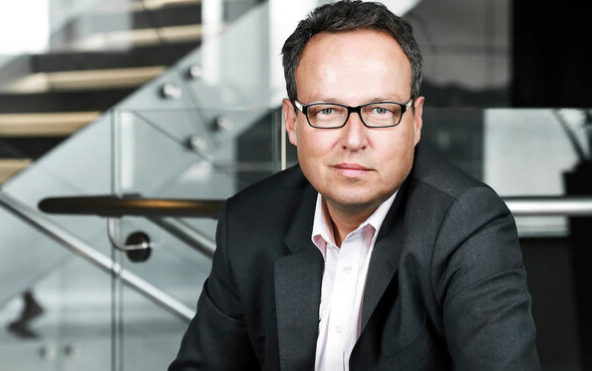Latest News

Hinrich Woebcken, former president and CEO of Volkswagen Group of America, and general partner at Trousdale Ventures. Photo: CesiumAstro
CesiumAstro has tapped a former CEO of Volkswagen Group of America for an advisory role that the company says will accelerate its vision of the satellite-connected car and a new constellation dedicated to the automotive industry.
CesiumAstro announced this week that Hinrich Woebcken, former president and CEO of Volkswagen Group of America, is working with the company as a senior executive advisor. Woebcken is currently a general partner at Trousdale Ventures.
Woebcken believes that connectivity has the most potential as a differentiating field of innovation in the automotive industry, he said in a conversation with Via Satellite. He believes satellite connectivity will contribute to autonomous driving, over-the-air software updates, redundancy, and emergency response.
“It’s not nice-to-have anymore, it’s a requirement. Within the next years — not decades — we are going to see a strong intention to go to space and have satellite connectivity,” Woebcken said of the automotive industry.
CesiumAstro builds phased arrays onboard satellites, and is also targeting phased array antennas for airplanes and vehicles. Founder and CEO Shey Sabripour told Via Satellite the company is working with several car companies on a potential LEO constellation for the automotive industry, and has come up with a design for a constellation and car-side antenna.
“This is a very specific constellation that serves automotive connectivity,” Sabripour said. “We want it to be an open system — a 5G, non-terrestrial network — not a proprietary system. It’s software-defined so that the system can use multiple constellations. Car companies do not want to be tied into one particular constellation or one particular mobile operator, they want to have complete freedom.”
At this point, Sabripour can’t share the names of the manufacturers that CesiumAstro is working with, and he said it’s a “slow process.” But his goal is get three car companies on board in order to target roughly 20 million cars per year for 2028/2029 car models.
A car-side satellite antenna at a price point attractive to car OEMs is the physics and manufacturing dilemma that has the potential to unlock the market if someone can solve it. Woebcken is optimistic.
“I think, conservatively speaking, to aim for the first generation below $100 for the car-side [antenna], and that has to be billed millions of times. It’s absolutely realistic and possible. I believe it will go even further down,” he said.
Woebcken sees satellite as an enabler of autonomous driving, particularly for redundant connectivity for safety decisions. For example, to ensure redundancy for over-the-air updates that are relevant for safety such as braking software or steering software. “This is something which is still tricky, where the redundant data communication between 5G and satellite communication could be a huge contributor to get this innovation implemented fast,” he said.
In addition, the data cars pick up about the surrounding environment or contextual data could be a potential “profit pool,” Woebcken said. Car companies could transmit the data via satellite and sell it to Google.
Sabripour said Woebcken will help the company refine its vision of connected mobility, help the company work with automotive manufacturers, and also aid with supply chain and manufacturing expertise for large-scale production.
“We want to bring three car companies together, so we may be looking at 20 million cars a year to support. I have to start thinking about — How do I scale this part of my business so that we can introduce the cars?” Sabripour said. “Hinrich has the right supply chain background and automotive manufacturing background to pull me toward building this capability within the company so that we can realize this dream in 2026 and beyond.”
Get the latest Via Satellite news!
Subscribe Now